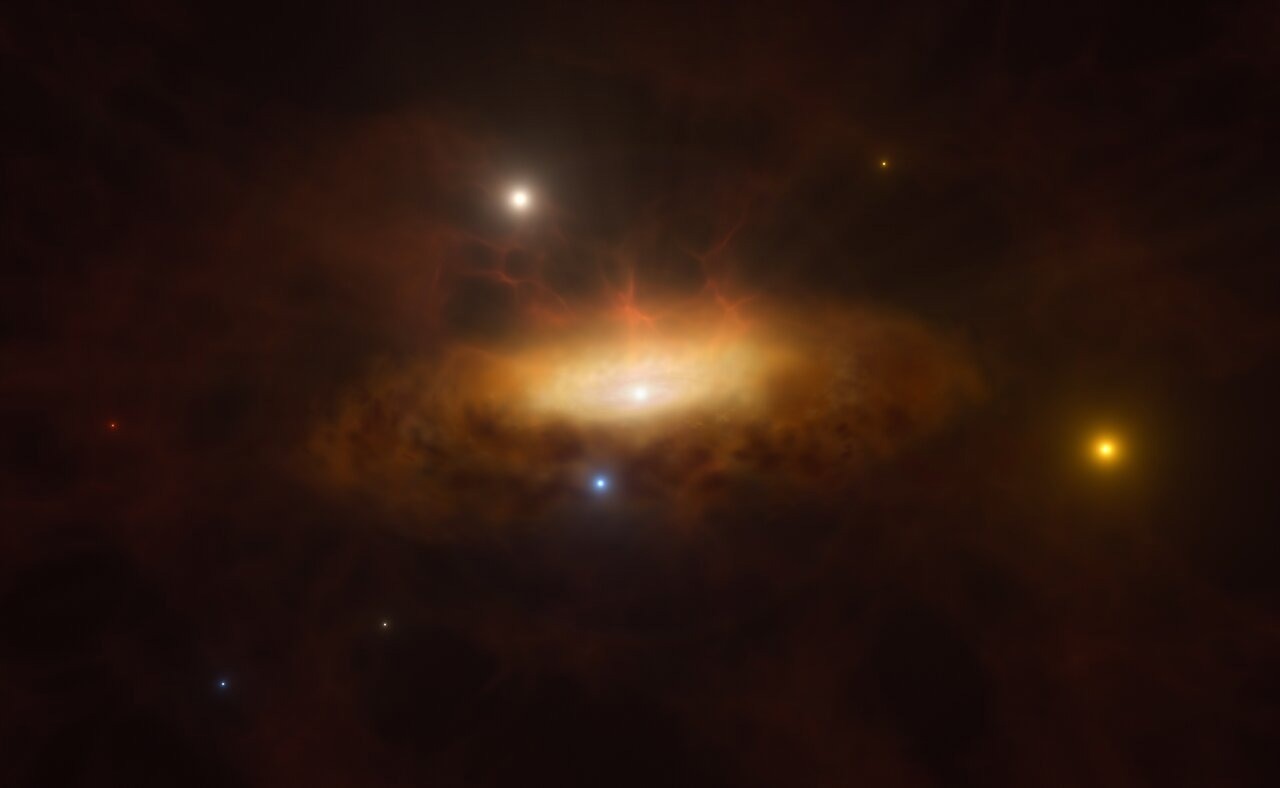Reviewed by Lexie CornerJun 19 2024
Astronomers from the European Southern Observatory have tracked changes in the galaxy's brightness using data from several space and ground-based observatories, such as the Very Large Telescope (VLT). According to the study published in the journal Astronomy & Astrophysics, the changes seen in the galaxy are probably the result of the gigantic black hole at its center suddenly waking up.
 Artist’s impression: The galaxy SDSS1335+0728 lighting up. Image Credit: European Southern Observatory
Artist’s impression: The galaxy SDSS1335+0728 lighting up. Image Credit: European Southern Observatory
Imagine you have been observing a distant galaxy for years, and it always seemed calm and inactive. Suddenly, its [core] starts showing dramatic changes in brightness, unlike any typical events we have seen before.
Paula Sánchez Sáez, Astronomer and Study Lead Author, European Southern Observatory
This is what happened to SDSS1335+0728, which underwent a rapid brightening in December 2019 and is now categorized as having an “active galactic nucleus” (AGN), a bright, compact region fueled by a vast black hole.
Some phenomena, such as supernova explosions or tidal disruption events—when a star gets too close to a black hole and is torn apart—can cause galaxies to light up suddenly. However, these changes in brightness usually endure only a few hundred or a few dozen days at most.
Over four years after being first observed to “switch on,” SDSS1335+0728 is continually becoming brighter. The galaxy, which is 300 million light-years away in the constellation Virgo, also exhibits fluctuations that have never been observed previously, leading astronomers to believe in an alternative explanation.
The group used new observations from multiple facilities, including the X-shooter instrument on ESO's VLT in Chile's Atacama Desert, along with archival data to interpret these brightness changes.
They discovered that SDSS1335+0728 is emitting significantly more light at ultraviolet, optical, and infrared wavelengths when comparing data collected before and after December 2019. In February 2024, the galaxy also began to release X-Rays into space.
“This behavior is unprecedented,” said Sánchez Sáez, who is also affiliated with the Millennium Institute of Astrophysics (MAS) in Chile.
The most tangible option to explain this phenomenon is that we are seeing how the [core] of the galaxy is beginning to show activity. If so, this would be the first time that we see the activation of a massive black hole in real-time.
Lorena Hernández García, Study Co-Author, University of Valparaíso
Massive black holes, the bulk of which are found at the center of galaxies like the Milky Way, have masses greater than 100,000 times that of the Sun.
These giant monsters usually are sleeping and not directly visible. In the case of SDSS1335+0728, we were able to observe the awakening of the massive black hole, [which] suddenly started to feast on gas available in its surroundings, becoming very bright.
Claudio Ricci, Study Co-Author, Diego Portales University
“[This] process has never been observed before,” Hernández García said.
This is the first time the black hole's awakening process has been seen in real-time; previous research has shown that dormant galaxies can become active after a few years.
Ricci, who is also affiliated with the Kavli Institute for Astronomy and Astrophysics at Peking University, China, added, “This is something that could happen also to our own Sgr A*, the massive black hole located at the center of our galaxy.” but it is unclear how likely this is to happen.
Additional observations are still required to exclude other possibilities. Another possibility is the observation of an unusually slow tidal disruption event or perhaps a new phenomenon. The duration and faintness of this occurrence would make it the longest and faintest known tidal disruption event.
Saez said, “Regardless of the nature of the variations, [this galaxy] provides valuable information on how black holes grow and evolve. We expect that instruments like [MUSE on the VLT or those on the upcoming Extremely Large Telescope (ELT)] will be key in understanding [why the galaxy is brightening].”
Journal Reference:
Saez, S. P., et al. (2024) SDSS1335+0728: The awakening of a ~106 M_sun black hole. Astronomy & Astrophysics. doi.org/10.1051/0004-6361/202347957